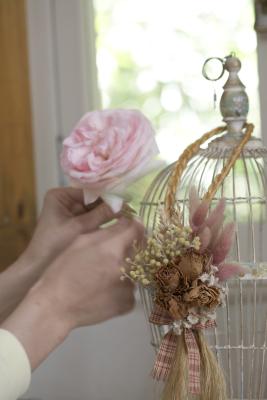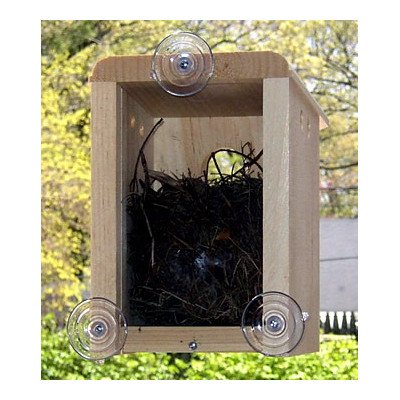One of the most sought after pet birds in the world is the African Grey. This bird, native to Africa, is considered one of the most intelligent of birds. It's amazing ability to speak and mimic sounds make it an entertaining companion.
African Greys are a medium sized parrot, predominantly grey, with accents of white. The two most common subspecies are Congo, noted as having a cherry red tail and black beaks, and the Timneh, which is smaller in size, darker gray, with a maroon colored tail and light colored mandible. The Congo is considered the better talker, but both are very capable of talking and equally intelligent.
African Greys have a long and rich history being kept as a pet. Egyption hieroglyphics dating back 4,000 years depict pet parrots. Throughout the Greek, and Roman histories Greys were highly valued for the ability to talk, and kept in very ornate cages. King Henry VIII had one, and Portuguese sailors kept them as companions on long voyages. This probably led to the images of pirates with parrots on their shoulders.
In 2007 the Grey Parrot was uplifted to Near Threatened status by some environmental groups. The international community is prohibiting the capture and import/export of wild caught Greys. In America, it is illegal to import these birds. Therefore, all Greys currently sold have been raised domestically. They are readily available, but can be quite costly
THE COST- When you begin your search for your Grey, you are going to be amazed at the wide price range. A bird breeder in Florida will sell a young Congo for as little as $600. Drive a few hundred miles north and the price jumps to $1000. Walk in to a New York pet shop and you will be lucky to find one for $1500. So why the price variations?
The costs start with the bird breeders. A properly raised handfed Grey require constant attention. Babies must be fed every 2 hours, 24 hours a day. This requires a tremendous amount of labor. Once the baby has been weaned, little is needed except to give the bird constant attention. As the bird gets older, this time must be compensated, so the cost goes up. A 1-year-old Grey now costs as much as $950-$1200. Some breeders who do this for a hobby are not as interested in recovering labor costs, as they do it for the joy of it.
Another factor is location. Birds bred in warm climates require little environmental control, and birds can be raised in outdoor flight cages. In northern climates, they can't handle the cold weather (remember, these birds are native to Africa) so the cost of housing adds up. Therefore, expect to pay a bit more for birds raised in these areas.
Pet stores very rarely breed their own birds, and depend on "jobbers", breeders or even wholesale dealers to supply them with birds to sell. They may get a price advantage from buying large quantities of birds, but they also must make a profit for themselves. This explains why pet stores sell Greys for as much as $2000.
Therefore, when you begin your search for your new pet, the key to getting a good price is research and negotiation. Whether you buy from a breeder or pet store is up to you. There are good and bad in both groups. Don't be afraid to ask questions. Call around and find the price range that Greys are being sold for, and make an offer.
HOW MUCH ATTENTION THEY REQUIRE?
African Greys are a highly intelligent bird. They will require a lot of interaction from the owner.
If you want your bird to talk, don't expect it to happen with those DVD's, tape recordings or other easy methods. It takes human interaction. Sorry, shortcuts won't work. You must teach your Grey to talk by starting with short, simple phrases. Be consistent, and reward your pet whenever possible. Greys should begin talking at about 1 year old. But be aware that your bird must want to talk, and many times they never will. In our experience they may not say a word for many years, then suddenly will begin repeating everything they have learned. Just be patient. Move your bird to another room, away from his cage, and work with him for 10 minutes per session. Interact as much as possible. Your Grey will devote itself to you and clamor for your attention.
The Grey does not like to be left alone without attention. They have a tendency for feather plucking and self mutilation. This is a clear sign of stress, insecurity or boredom. Move your bird to an area where the family is at. Place it in front of a window. Be sure your bird has lots of toys. But none of these replaces your interaction with the bird. You need to set aside a part of each day to give your bird attention.
CAGES- There is no such thing as a cage too big. But every bird owner will have their restrictions, and in many cases they look for the smallest cage possible.
African Greys require a medium sized parrot cage. It must be able to spread it's wings, move freely about, and have room to hang toys and food/water dishes. The minimum preferred size is at least 28 inches. Preferably a cage 36 inches tall to allow for lots of exercise room. Bar spacing should be no wider then 1 inch, as the bird can get it's head stuck between the bars. The material should be of strong gauge wire, because Africans can easily destroy a cage designed to hold parakeets or cockatiels.
When you buy the cage, keep in mind that you need to clean it frequently. Fancy ornate cages can be very time consuming. Metal cages will rust if not dried thoroughly. Stainless steel cages are preferred, but very expensive.
Examine the cage for dangers such as doors that don't fit properly. Greys have been known to get their feet caught in entry and feed doors, so look them over. Look for bad welds that may have sharp edges. These are all common with inexpensive cages.
Make sure perches are big enough for your bird. Your Grey will spend much of his time standing on them, and improper perches will result in feet problems. A variety of different sized perches is a great start.
Find bird cages that have replacement food/water cups, and by extra sets. This way, while one set is in the case you can be soaking and cleaning the others. Contaminated water dishes is a major cause for disease, but such a simple problem to fix!
DIET- You can talk to ten different breeders and get ten different answers on this topic...all can be correct. My standard answer? African Greys have the same exact nutritional requirements that humans do. What would happen if you ate seeds and nuts all day long? Why would you expect anything different from your Grey?
Grey's require a higher protein diet then other birds, and a lot more calcium. By feeding your bird a good quality commercial bird pellet diet, and supplementing it with lots of fruits and vegetables, you will never have a problem. There are commercial diets available formulated specifically for African Greys.
I also disagree with many assertions that Greys should not eat meat. Keep in mind the Grey's ancestral history of coming from Africa. While they do eat lots of seeds and vegetation, they are also part scavengers. Meat is loaded with protein and high in vitamin B's, which is missing from a seed and vegetable diet. Pelleted foods add these vitamins and addition protein to correct this, but you can do the same by sharing your meals with your bird. Not only does this improve the birds diet, but it increases the interaction you are having with your bird. But just like humans, don't overdue it.
Another major source of argument between breeders is whether to give birds milk and dairy products. Here is the scoop...
Milk and dairy products contain lactose. In order to properly digest it, your body produces an enzyme called lactase. Birds do not produce this enzyme, and it's actually toxic to the bird! Too much milk results in diarrhea, which in turn causes severe medical problems for birds. So the uneducated breeder just removes dairy products from the diet.
But milk also contains a huge amount of calcium and other minerals that are sorely lacking from the birds diet. While this can be replaced with supplements such as cuttlebones or other sources of ground up calcium, it's still depriving the bird of other vital items it needs in the diet.
African Greys can easily handle small amounts of dairy products. Cheese and yogurt, rich in calcium but low in lactose, is an excellent treat. Be creative... Give your birds an occasional slice of pizza, or a splash of milk over their favorite cereal in the morning. Just don't overdue it!
LIFE SPAN-African Grey's, like other larger parrots, have a long lifespan. This fact must be taken into consideration by the new bird owner. What do you do with the bird when you die and the bird outlasts you?
Greys reach the age of maturity from 3-5 years old. A properly raised Grey will live from 35-50 years. It is not unheard of for Greys to live up to 80 years old!
So if you choose an African Grey as a pet, you can expect a very long lasting relationship with him.

 Ways to Decorate a Bird Cage
Ways to Decorate a Bird Cage
Ways to D
Ways to Decorate a Bird Cage
Ways to Decorate a Bird Cage
Ways to D
 Pros and Cons for Buying or Building an Aviary for Your Birds
Choosing an AviaryBeautiful
Pros and Cons for Buying or Building an Aviary for Your Birds
Choosing an AviaryBeautiful
 Great Birds of Prey in Australia
The best thing I have ever d
Great Birds of Prey in Australia
The best thing I have ever d
 How to Help a Bird That Flew Into the Window
How to Help a Bird That Flew Into the Window
How to Help a Bird That Flew Into the Window
How to Help a Bird That Flew Into the Window
 A Beginners Guide to Keeping Canaries
A Guide to Keeping CanariesC
A Beginners Guide to Keeping Canaries
A Guide to Keeping CanariesC